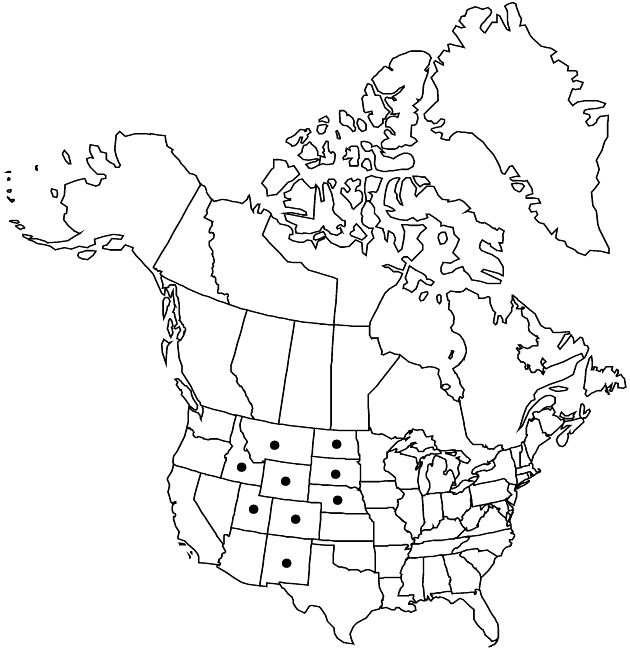Erigeron subtrinervis
Mem. Torrey Bot. Club 5: 328. 1894.
Perennials, 15–90 cm; rhizomatous to subrhizomatous, fibrous-rooted, caudices usually branched, woody, thick. Stems erect, moderately to densely hirsute (hairs 0.5–0.8 mm), eglandular. Leaves basal (usually withering by flowering) and cauline; basal blades oblanceolate-spatulate, 30–80 × 6–20(–27) mm, margins entire, faces evenly hirsute to strigoso-hirsute, usually eglandular; cauline blades lanceolate to oblong, oblong-ovate, or broadly ovate, nearly even-sized distally or sometimes mid largest (continuing to immediately proximal to heads, bases clasping to subclasping). Heads 1–6(–21) in corymbiform arrays. Involucres 6–9 × 13–20 mm. Phyllaries in 2–3(–4) series, moderately to densely hirsute, minutely glandular. Ray florets 100–150; corollas blue to lavender, 7–18 mm (ca. 1 mm wide), laminae coiling at tips. Disc corollas 4–5 mm. Cypselae 1.6–2 mm, 2(–4)-nerved, faces sparsely strigose; pappi: outer of setae, inner of 20–30 bristles.
Phenology: Flowering (Jun–)Jul–Sep.
Habitat: Opening and margins, roadsides, often shaded, ponderosa pine, pine-fir, mixed conifer, aspen
Elevation: 1800–3000(–3500) m
Distribution

Colo., Idaho, Mont., Nebr., N.Mex., N.Dak., S.Dak., Utah, Wyo.
Discussion
Erigeron subtrinervis is variable in vestiture, perhaps reflecting gene exchange with E. speciosus. Erigeron speciosus var. mollis (A. Gray) S. L. Welsh may be a recurrent hybrid; it is identified here within E. subtrinervis.
Selected References
None.